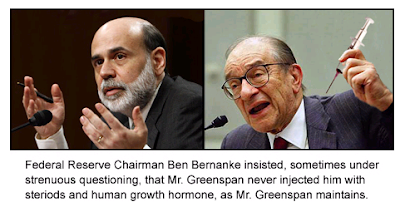 I have repeatedly warned that some of the biggest investors in toxic Subprime mortgages are money market funds, especially those boasting above average returns. Let’s be clear about this. Any investment, even a money market fund, which offers an above average return, has to also take an above average risk.
I have repeatedly warned that some of the biggest investors in toxic Subprime mortgages are money market funds, especially those boasting above average returns. Let’s be clear about this. Any investment, even a money market fund, which offers an above average return, has to also take an above average risk.
Some firms will avoid passing on the losses to the investors for obvious reasons, such as creating a bad reputation, which will be bad for their business. The latest on this topic was the admission by Wells Fargo, that it had incurred a loss of $39 million from money funds:
Wells Fargo & Co, the fifth-largest U.S. bank, said on Friday it has recorded a $39 million loss tied to some complex debt that has lost value and which is held by its money market mutual funds.
In its annual report filed with the U.S. Securities and Exchange Commission, Wells Fargo said the loss relates to a capital support agreement for up to $130 million related to one structured investment vehicle held by some money funds that invest in non-government securities.
The San Francisco-based bank said it entered the agreement about a month ago to preserve the “triple-A” investment ratings for some of the funds. Wells Fargo said the $39 million liability reflects the guarantee it provided. The bank said it has about $106 billion of assets in money market mutual funds.
A Wells Fargo spokeswoman had no immediate comment.
Sure, why would they comment, it’s obvious they invested in some of the Subprime slime and, to keep investors happy, they chose to dip into their own pockets. Who else has similar troubles?
Wells Fargo joins several other companies with mutual fund operations to bail out or support money funds stuck with debt that became illiquid or quickly lost value, including Bank of America Corp, Janus Capital Group Inc Legg Mason Inc and Wachovia Corp.
Structured investment vehicles are off-balance-sheet entities that raise funding by issuing short-term debt and longer-term capital, and invest proceeds in such things as bank debt and asset-backed securities. Many have lost value as investors shunned complex debt and halted short-term funding, resulting in losses from forced asset sales.
Money funds are designed to maintain a constant $1 per share net asset value, and not lose investor principal. While fund sponsors need not make up investment losses, many do so to avoid investor redemptions and a loss of reputation.
As I said before, there are still way too many uncounted skeletons in unknown closets. If you have any money in high yielding money market funds, get out or change your selection to U.S. treasury only, if you can. When things really hit the fan, some companies may have no choice but to crack the buck and leave you holding the short end of the stick.






